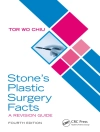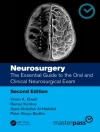<p><strong><em>An exquisitely illustrated guide to AVMs</em></strong></p><p><strong>Honorable Mention at 2015 PROSE Awards!</strong></p><p>This sequel to Dr. Lawton’s best-selling <cite>Seven Aneurysms</cite> focuses on microsurgical resection techniques for AVMs found in the lobes and deep regions of the brain. It categorizes the techniques into subtypes to simplify the broad spectrum of brain AVMs neurosurgeons may encounter. The book is organized into three sections: The Tenets, which establishes eight steps for AVM resection; The Seven Arteriovenous Malformations, which describes the anatomical terrain and surgical strategies for thirty-two AVM subtypes; and The Selection section, in which Dr. Lawton discusses what he believes to be the keys to successful AVM surgery: good patient selection and best application of multiple treatment modalities. </p><p>Key Features:</p><UL><LI>Includes more than 700 spectacular full-color illustrations developed exclusively for this book <LI>Creates a system for conceptualizing and approaching AVMs <LI>Illustrates a stepwise process for AVM resection using strategic ‘battle plans'</LI></UL><p>Summarizing the common AVMs encountered in practice, neurosurgeons and neurosurgical residents will find this hybrid atlas-text to be an essential part of their armamentarium.</p>
Содержание
<p><strong>Section I: The Tenets</strong><br>1 Exposure<br>2 Subarachnoid Dissection<br>3 Draining Veins<br>4 Feeding Arteries<br>5 Pial Dissection<br>6 Parenchymal Dissection<br>7 Ependymal/Deep Dissection<br>8 Arteriovenous Malformation Resections<br>9 Intraoperative Arteriovenous Malformation Rupture<br>10 Surgeon Factors<br><strong>Section II: The Seven Arteriovenous Malformations</strong><br>11 Frontal Arteriovenous Malformations<br>12 Temporal Arteriovenous Malformations<br>13 Parieto-Occipital Arteriovenous Malformations<br>14 Ventricular and Periventricular Arteriovenous Malformations<br>15 Deep Arteriovenous Malformations<br>16 Brainstem Arteriovenous Malformations<br>17 Cerebellar Arteriovenous Malformations<br><strong>Section III: Selection Strategies</strong><br>18 Patient Selection<br>19 Multimodality Management Strategies and Treatment Selection<br>Conclusion</p>












